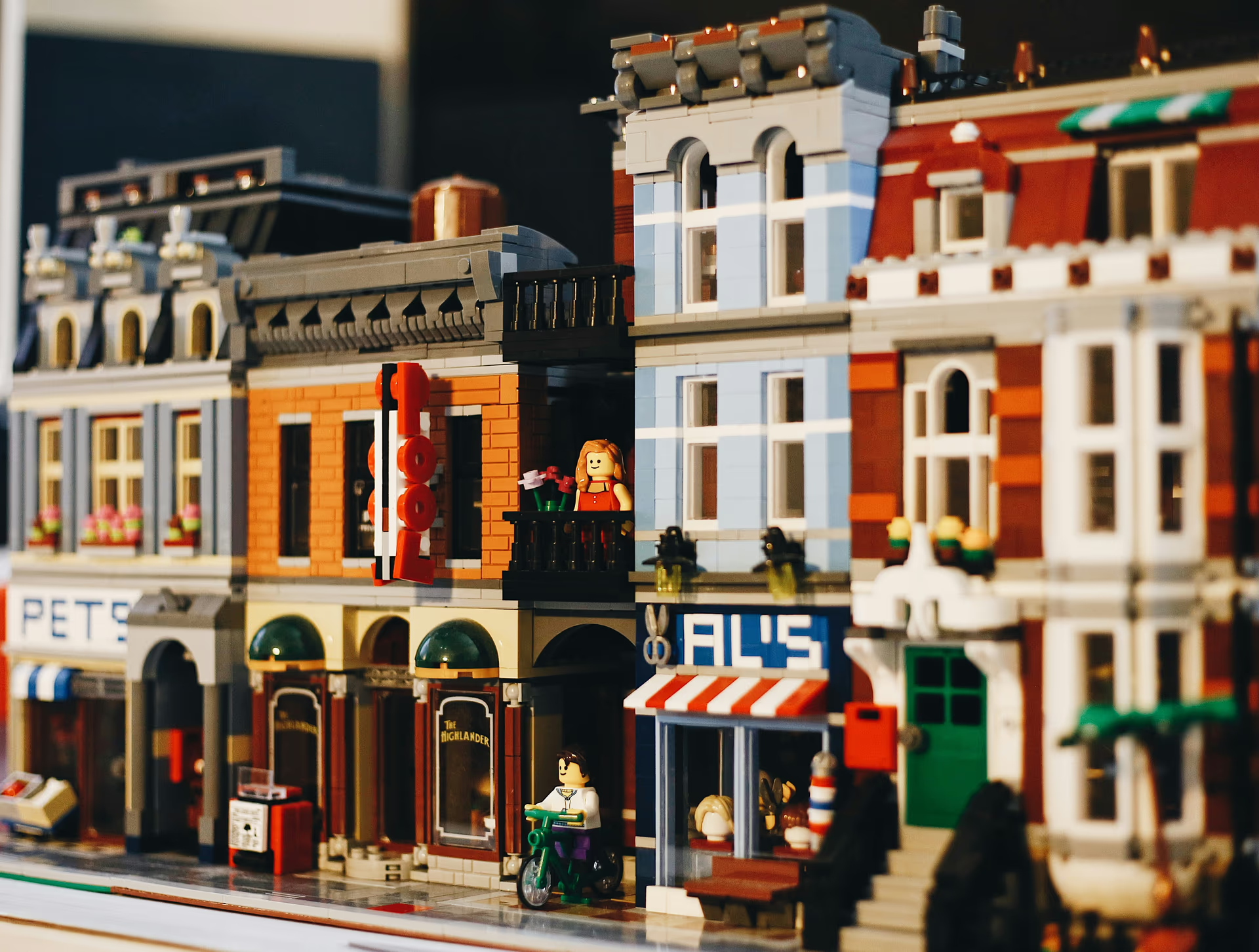Imagine this: A LEGO set you bought for $200 today could be worth over $1,000 in just a few years. Sounds unbelievable? Think again! Investing in rare LEGO sets has rapidly emerged as one of the most fascinating alternative asset classes — outpacing traditional investments like stocks and gold.
With nostalgia fueling demand and supply remaining limited, collectors and investors alike are realizing the hidden potential of LEGO. But is this investment avenue truly profitable? Let's explore the booming LEGO market, uncover the best sets for investment, and navigate the potential risks.
Why LEGO Is Becoming a Lucrative Investment
For many, LEGO is a cherished childhood memory. But did you know that, according to a study by Russia's Higher School of Economics, retired LEGO sets appreciate by an average of 11% per year — surpassing gold, stocks, and other traditional assets? This remarkable growth is driven by a unique mix of scarcity, brand loyalty, and an ever-expanding community of passionate collectors.
Key Factors Behind LEGO's Investment Appeal:
- Limited Production Runs: Once a LEGO set retires, it is no longer produced, driving up demand and market prices in the secondary market.
- Nostalgia-Driven Demand: Fans of Star Wars, Harry Potter, and Lord of the Rings hunt for discontinued sets to relive their childhood memories.
- Global Collector Community: The Adult Fans of LEGO (AFOL) community is thriving, ensuring a steady demand for rare sets.
- Theme-Specific Collecting: Dedicated collectors seek to complete series, ensuring older sets retain significant value.
- Cultural Influence & Movie Tie-ins: Limited-edition LEGO sets based on blockbuster films often see rapid appreciation as franchises grow in popularity.
- High-Quality Materials & Craftsmanship: Unlike many toys, LEGO's durability and precise manufacturing make them highly collectible over decades.

Top-performing LEGO sets
Not all LEGO sets appreciate in value, but some themes and models have shown consistent returns. Here are the top categories to consider:
1. LEGO Star Wars
The Star Wars franchise and LEGO have created a powerhouse partnership, resulting in some of the most sought-after sets:
- Ultimate Collector's Millennium Falcon (10179): Originally sold for $500, making it the priciest set at the time, is today worth over $3,000.
- Death Star (10143): Once retailed for $270, now valued at around $3,000 with an annual appreciation rate of 6%.
- Imperial Star Destroyer (10030): Initially sold for $270, this set now fetches over $2,500.
2. LEGO Modular Buildings
The intricate architectural designs of LEGO Modular buildings have a loyal fan base, with some sets increasing tenfold in value:
- Café Corner (10182): Launched at $140, now worth over $2,500.
- Green Grocer (10185): Originally $150, now exceeding $1,800.
- Fire Brigade (10197): Originally priced at $150, this set now goes for $800-$1,000.
3. LEGO Harry Potter
The magic of Harry Potter keeps these sets in high demand:
- Diagon Alley (10217): Sold for $150 in 2011, currently valued at around $700, with an impressive annual growth rate of 7.7%.
- Hogwarts Castle (4842): Once $130, now worth over $500.
- Knight Bus (4866): Originally $35, even this small set now sells for $150+.
4. LEGO Ideas & Special Editions
LEGO Ideas sets, mostly inspired by fan submissions, are often produced in limited quantities, making them solid investments:
- NASA Apollo Saturn V (21309): Initially $120, now exceeding $300.
- Ghostbusters Ecto-1 (21108): Launched at $50, now selling for $250-$300.
- The Beatles Yellow Submarine (21306): Originally $60, now fetching $200+.

Understanding the Risks of LEGO Investing
While LEGO investing can be highly profitable, it comes with its own set of challenges:
- Storage & Preservation: Keeping LEGO sets in pristine condition is crucial. Sealed boxes should remain unopened, and they must be stored in a climate-controlled environment to avoid damage from humidity or temperature fluctuations. Even minor dents or discoloration on the packaging can significantly decrease resale value.
- Market Saturation: If a particular set is heavily purchased by investors, the resale market can become oversaturated, causing prices to stagnate. This often happens when speculation about a set's future value leads to bulk buying, only for the supply to outweigh demand when investors attempt to sell.
- Liquidity Issues: Unlike stocks, which can be sold instantly, finding a buyer willing to pay the desired price for a LEGO set can take time. Sales typically happen through online platforms like eBay or BrickLink, where auction and transaction fees can also eat into profits.
- Counterfeit LEGO: The growing demand for rare LEGO sets has led to an increase in counterfeit products, particularly for high-value models. Fake sets can be difficult to spot, and buyers should be cautious. Always purchase from reputable sellers or platforms, like ours AltFolio.
- Fluctuating Demand: Cultural trends heavily influence the value of LEGO sets. While some themes, such as Star Wars or Harry Potter, tend to hold strong long-term value, others may see fluctuating demand. A once-popular set may lose desirability if interest in the franchise wanes or newer, more appealing sets are released.
Best Practices to Maximize Returns
If you're serious about LEGO investing, strategy is key. With the right approach, you can maximize your returns and avoid common pitfalls. Here are some best practices for building a strong LEGO investment plan:
- Buy Soon-to-Retire Sets: LEGO sets typically retire within 2 to 5 years of release. Investing in sets that are about to be discontinued can yield significant gains, as demand tends to surge once they are no longer available at retail prices.
- Hunt for Discounts & Deals: LEGO sets can often be purchased below retail price if you know where to look. LEGO retail stores, online marketplaces, cashback programs, seasonal sales, and credit card rewards can all help lower acquisition costs.
- Store Properly: Proper storage is critical to maintaining a LEGO set's value. Keep sets in a cool, dry place, away from direct sunlight, humidity, and extreme temperatures to prevent fading, warping, or box damage. Avoid stacking heavy boxes on top of each other to prevent crushing.
- Diversify Your Collection: Don't put all your investments into one LEGO theme. Instead, spread your purchases across multiple high-performing categories. This diversification protects against value drops in any single category and increases the likelihood of strong overall returns.

